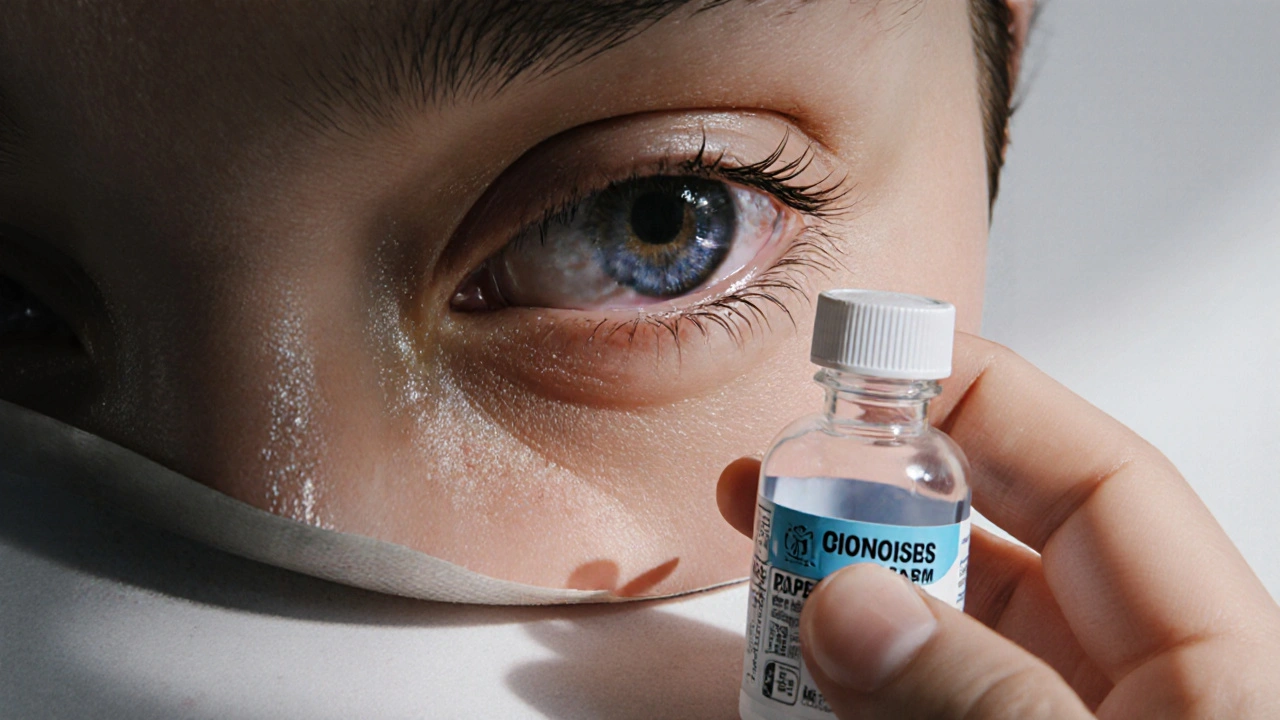A thorough side‑by‑side review of Cyclomune eye drops, its cyclosporine rivals, costs, effectiveness, safety, and practical tips for choosing the right dry‑eye treatment.
If you’re tired of squeezing tiny bottles or dealing with blurry vision right after a drop, you’re not alone. Many people look for ways to keep their eyes comfortable without relying solely on traditional eye drops. Below you’ll find easy‑to‑use alternatives that work well for dry eyes, irritation, or mild allergies.
Ointments are a solid choice when you need long‑lasting moisture. They sit on the eye surface longer than drops, so you often only need to apply them once before bed. Look for products that list petrolatum, lanolin, or hyaluronic acid as key ingredients. These create a protective film that reduces evaporation and eases burning sensations.
Gels sit somewhere between drops and ointments. They’re thicker than a standard drop but clear enough to let you see right after application. Many over‑the‑counter gels contain carbomer or polyacrylate, which thicken the solution without making it gritty. Apply a small ribbon to the lower lid and blink a few times to spread it evenly.
For people with mild allergies, lubricating eye wipes can be handy. Instead of spraying liquid, you use a pre‑moistened wipe to gently clean the eyelid margin and apply a thin layer of lubricant. This method avoids the sting that some drops cause when they hit an inflamed surface.
Sometimes the problem starts from the inside. Omega‑3 fatty acids, especially EPA and DHA, have been shown to improve tear quality. You can get them from fish oil supplements or by eating fatty fish like salmon a few times a week. Consistency matters—give it a month before you notice a difference.
Staying hydrated is a low‑tech but powerful trick. Dehydration reduces tear production, so aim for at least eight glasses of water daily. If you work in an air‑conditioned office, consider a humidifier to keep the air from drying out your eyes.
Screen time is another silent culprit. The 20‑20‑20 rule—look at something 20 feet away for 20 seconds every 20 minutes—helps keep your blink rate normal. Pair this habit with a warm compress a few times a week; the heat loosens clogged oil glands and boosts natural tear flow.
Lastly, don’t forget about oral antihistamines if allergies are driving your discomfort. While some antihistamines can dry eyes further, newer, non‑sedating formulas are less likely to cause that side effect. Talk to a pharmacist or doctor to pick the right one for you.
By mixing topical alternatives like ointments or gels with simple lifestyle changes, you can reduce dependence on traditional eye drops and keep your eyes feeling fresh all day. Try one or two of these ideas and see which works best for your routine.

A thorough side‑by‑side review of Cyclomune eye drops, its cyclosporine rivals, costs, effectiveness, safety, and practical tips for choosing the right dry‑eye treatment.